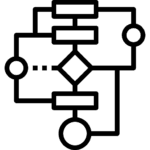Overview
This course is designed to teach you how to turn raw data into meaningful, insightful and visually compelling graphics using Python. Whether you’re a data analyst, student, researcher or aspiring data scientist, this course will give you the tools and techniques to effectively communicate data-driven insights.
Requirements
Basic Python programming knowledge is required.
Certificate
Participants receive a certificate of completion of the authorized Softinery course.
Data Visualization in Python – Syllabus
Instructor

PhD Eng. Szymon Skoneczny is a former university professor specialized in mathematical modelling. He has also worked for international companies like Electricite de France, Siemens and ArcellorMittal.

Over 3000 hours of tutoring

Specialized in mathematical modelling

Over 40 scientific articles

Experienced in algorithms and high-performance computations








